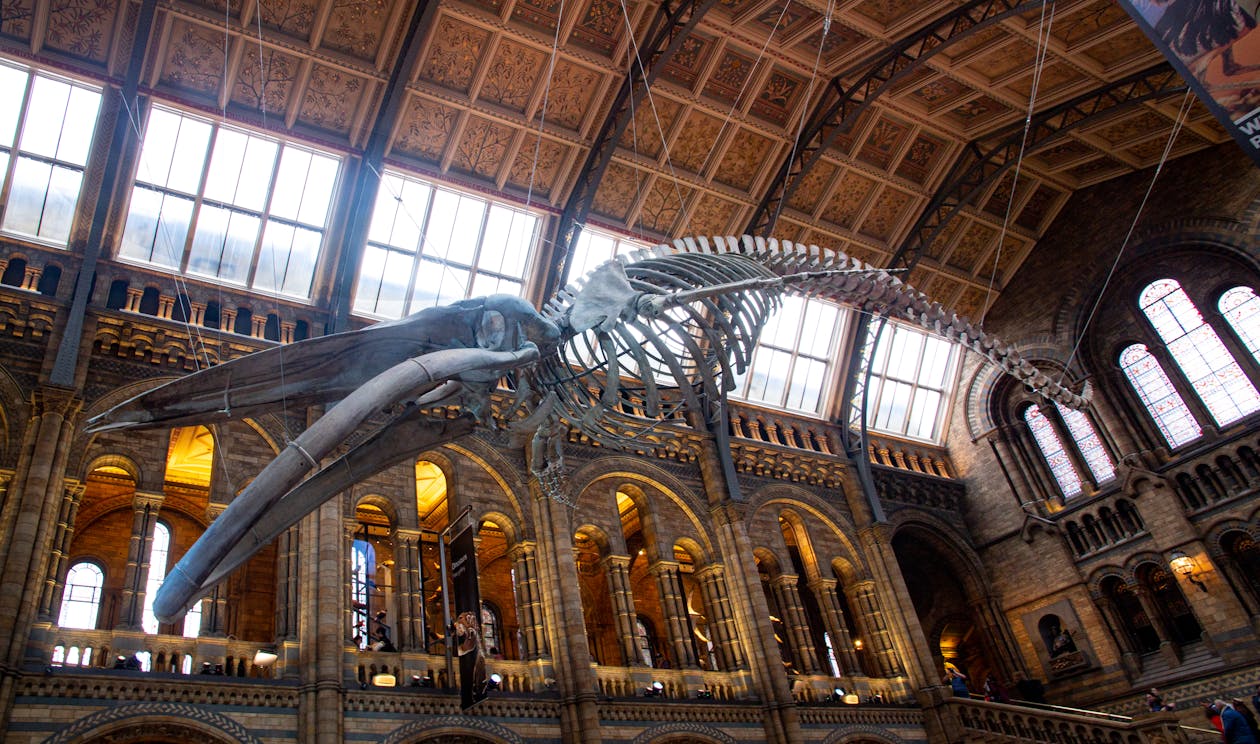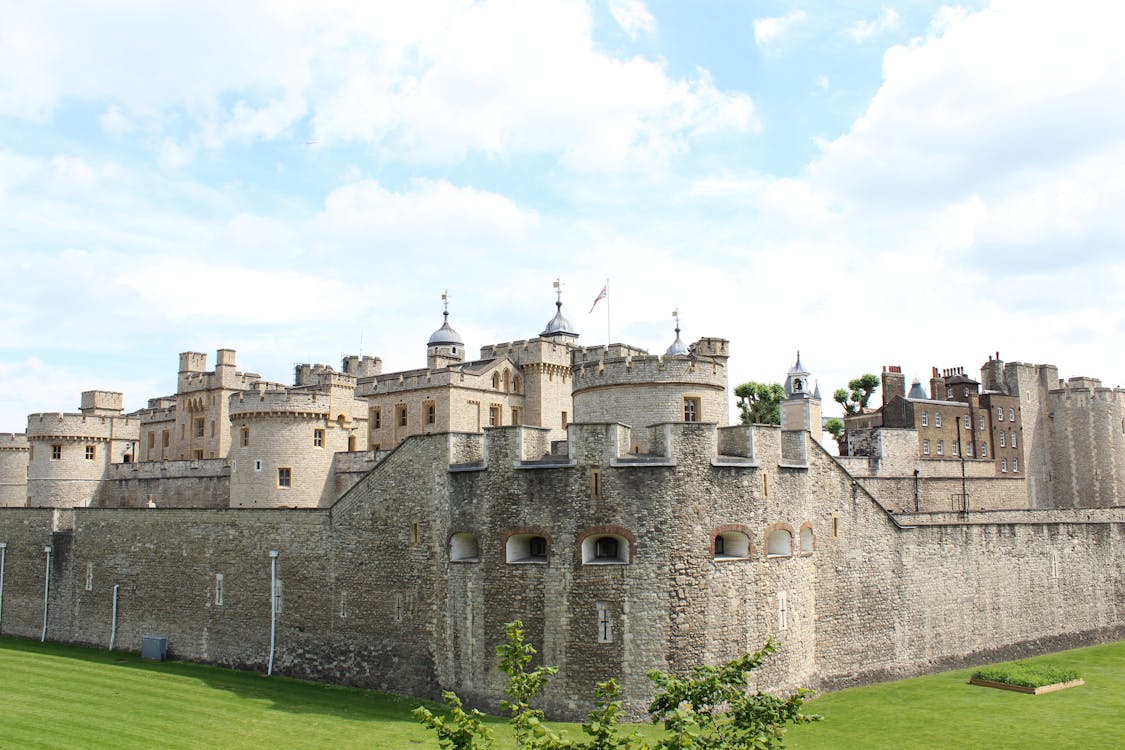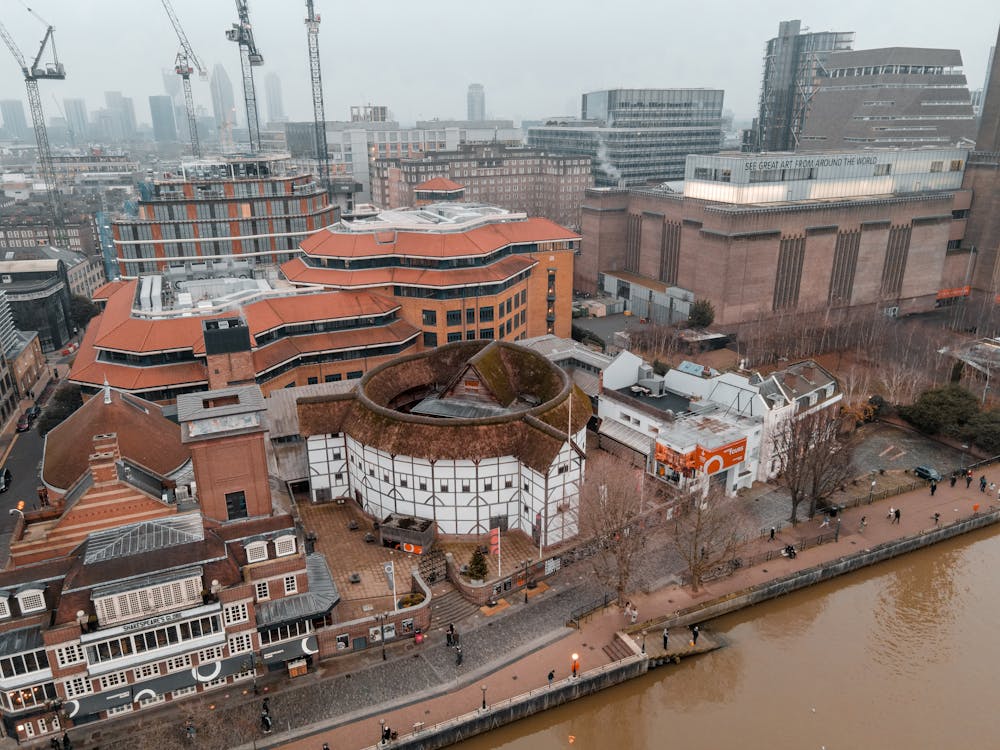London is full of world-class educational attractions, from museums and galleries to historic sites. You don’t have to be studying to get the most out of an educational sight, as there’s so much to learn no matter your age or stage in life. A trip to London wouldn’t be complete without a visit to at least one of these gems. Here’s a detailed overview of the top 10 educational attractions in London:
Popular on LondonNet
1. The British Museum
The British Museum, located in London, is one of the world’s most renowned cultural institutions. Founded in 1753, it houses an extensive collection of art and antiquities from various civilisations, offering insights into human history and creativity. The museum offers guided tours, workshops, and resources for students of all ages, making it a prime destination for history enthusiasts.
Highlights:
- The Rosetta Stone: One of the museum’s most famous artefacts, the Rosetta Stone was crucial in deciphering Egyptian hieroglyphs. Its inscriptions in three scripts—Greek, Demotic, and hieroglyphic—allowed scholars to unlock the language of ancient Egypt.
- The Elgin Marbles: A collection of classical Greek marble sculptures, these artefacts once adorned the Parthenon in Athens. Their acquisition has been the subject of much debate regarding cultural heritage and repatriation.
- Egyptian Antiquities: The museum boasts an impressive collection of mummies, statues, and artefacts that reflect the grandeur of ancient Egypt. The Egyptian Galleries are among the most visited sections of the museum.
- Assyrian and Babylonian Art: The museum’s Assyrian collection includes monumental sculptures from palaces of ancient Mesopotamia, providing a glimpse into the art and culture of one of the world’s earliest civilizations.
- The Sutton Hoo Treasure: This collection of Anglo-Saxon artefacts, including a ceremonial helmet and intricately crafted jewelry, was discovered in a burial site in Suffolk and offers insight into early medieval Britain.
Architecture and Design
The British Museum’s architecture is a blend of classical and modern styles. The iconic Great Court, designed by Lord Foster, features a stunning glass roof that floods the space with natural light and creates a dynamic environment for visitors.
2. The Natural History Museum
The Natural History Museum in London is a world-famous institution dedicated to the study and display of natural history. Established in 1881, the museum is housed in a stunning Victorian Gothic building designed by architect Alfred Waterhouse, characterised by its intricate terracotta façade and iconic entrance hall. The museum’s educational initiatives aim to inspire curiosity about the natural world and promote environmental awareness.

Key Attractions:
- Dinosaur Gallery: One of the museum’s most popular features, the Dinosaur Gallery showcases a wide variety of dinosaur skeletons, including a magnificent Diplodocus cast that greets visitors in the central hall. The exhibit highlights the evolution and diversity of these fascinating creatures.
- The Wildlife Garden: This outdoor space offers a unique opportunity to explore biodiversity within a London urban environment. It features a variety of habitats, including meadows, ponds, and woodlands, and serves as a living laboratory for visitors and researchers.
- The Hintze Hall: The grand entrance hall is home to the impressive blue whale skeleton, suspended from the ceiling. This striking display is a centrepiece of the museum and symbolises the vastness of marine life.
- Minerals and Gems: The museum houses a remarkable collection of minerals and gemstones, showcasing the beauty and diversity of Earth’s geological resources. The vaults display stunning crystals, precious stones, and unique geological specimens.
- Human Evolution: This exhibit explores the story of human evolution, featuring fossil casts and interactive displays that trace our ancestry and the development of Homo sapiens.
Research and Conservation
Beyond public exhibitions, the museum is a leading research institution, with scientists engaged in various fields, including palaeontology, biodiversity, and climate change. The museum also plays a crucial role in conservation efforts, working to protect endangered species and promote sustainable practices.
Visitor Experience
With free entry to its permanent exhibitions, the Natural History Museum attracts millions of visitors each year. The engaging displays and interactive experiences make it a favourite destination for families, students, and anyone interested in the wonders of the natural world.
3. The Science Museum
The Science Museum in London is a premier institution dedicated to the exploration and celebration of scientific achievement and innovation. Founded in 1857, the museum is part of the Science Museum Group and features an extensive collection that spans various fields, including technology, medicine, and space exploration. The museum’s resources encourage a deeper understanding of science and its relevance to everyday life.
Key Attractions
- The Launch Pad: This interactive gallery allows visitors, especially children, to engage with science through hands-on exhibits. It features experiments that demonstrate principles of physics and engineering, making science accessible and fun.
- The Wonderlab: An immersive experience filled with interactive displays, the Wonderlab showcases the wonders of science through live demonstrations and experiments. It covers a variety of topics, from chemistry to physics, and encourages curiosity and exploration.
- The History of Medicine: This exhibit explores the evolution of medical science, featuring artefacts such as early surgical instruments, medical texts, and examples of medical breakthroughs. It provides insight into how medicine has developed over the centuries.
- Space Gallery: Home to a range of fascinating space-related exhibits, this gallery includes a life-size replica of the Apollo 10 command module and displays that explore the history of space exploration and the technology that makes it possible.
- The Future of Transport: This section showcases innovations in transportation, featuring everything from the first steam locomotives to modern electric vehicles. It examines the impact of transport on society and the environment.
Research and Innovation
In addition to its exhibitions, the Science Museum is a hub for research and innovation. It collaborates with scientists and institutions to promote scientific inquiry and public understanding of scientific developments. The museum also hosts temporary exhibitions that highlight cutting-edge research and technology.
4. The Tower of London
The Tower of London is one of the most iconic historical landmarks in the United Kingdom, known for its rich history and significant role in British heritage. Located on the north bank of the River Thames, this UNESCO World Heritage Site has served various purposes over the centuries, including a royal palace, fortress, prison, and treasury. With its dramatic past, architectural beauty, and significance as a royal stronghold, it continues to captivate visitors from around the world, offering a glimpse into the storied history of England. The Tower provides a rich exploration of English history, making it an essential stop for history buffs.

Historical Significance
- Foundation and Early Years: The Tower was founded by William the Conqueror in 1066 as part of the Norman Conquest of England. The White Tower, the central structure, was completed in 1100 and served as a demonstration of power and authority.
- Royal Residence: The Tower of London was once a royal residence, housing several monarchs. It was known for its luxurious accommodations and served as a place of refuge during times of unrest.
- Prison and Executions: Perhaps most famously, the Tower has been used as a prison, holding high-profile prisoners such as Anne Boleyn, Sir Thomas More, and Lady Jane Grey. Many were executed on Tower Green, with the stories of their lives and deaths adding to the Tower’s lore.
- Crown Jewels: The Tower is home to the Crown Jewels, a magnificent collection of royal regalia and ceremonial objects used in the coronation of British monarchs. The display includes crowns, sceptres, and other treasures, showcasing the grandeur of the British monarchy.
Architecture
The Tower of London features a mix of architectural styles, primarily Norman and Gothic. The White Tower is a striking example of Norman military architecture, characterized by its thick stone walls and defensive features. The complex has been expanded over the centuries, with various towers, walls, and buildings added.
The Yeoman Warders
The Yeoman Warders, commonly known as “Beefeaters,” are the ceremonial guardians of the Tower. They play a vital role in its history, serving as tour guides and protectors of the Crown Jewels. Their distinctive uniforms and rich stories of the Tower’s past make them an integral part of the visitor experience.
Visitor Experience
The Tower of London attracts millions of visitors each year. Guided tours led by Yeoman Warders provide fascinating insights into the Tower’s history, while interactive exhibits and displays enhance the educational experience. Visitors can explore the medieval architecture, view the Crown Jewels, and learn about the Tower’s role in British history.
5. Tate Modern
Tate Modern is one of the world’s leading contemporary art museums, located on the South Bank of the River Thames in London. Housed in a former power station, this iconic institution has transformed the landscape of modern art since its opening in 2000. The viewing platforms offer stunning views of London, making it a popular destination for both art lovers and tourists.
Building and Architecture
The museum is situated in the former Bankside Power Station, designed by Sir Giles Gilbert Scott in the 1950s. Its striking industrial architecture features vast turbine halls and large, open spaces, which have been creatively repurposed to display artworks. The building’s blend of modern design with its industrial past creates a unique atmosphere that enhances the visitor experience.
Collections
Tate Modern’s collection focuses on international modern and contemporary art from the 20th century to the present day. Key highlights include:
- Paintings and Sculptures: The museum features works by renowned artists such as Pablo Picasso, Andy Warhol, Mark Rothko, and Louise Bourgeois. The collection encompasses various movements, including Surrealism, Abstract Expressionism, and Pop Art.
- Installations and Video Art: Tate Modern is known for its large-scale installations and multimedia works. The Turbine Hall, a vast space within the museum, often hosts ambitious installations by contemporary artists, attracting significant public attention.
- Performance Art: The museum frequently engages with performance art, offering live events that encourage interaction and challenge traditional art forms.
Special Exhibitions
Tate Modern regularly hosts temporary exhibitions that showcase specific artists, movements, or themes. These exhibitions provide deeper insights into contemporary art practices and often feature works that are not part of the permanent collection.
6. The Imperial War Museum
The Imperial War Museum (IWM) London is a prominent museum dedicated to documenting the experiences of individuals and communities during wartime. Established in 1917, its mission is to collect, preserve, and exhibit artefacts related to the conflicts involving Britain and the Commonwealth, particularly focusing on the 20th century. The IWM serves as a vital resource for understanding the complexities of war and its effects on individuals and society. Through its diverse collections and thought-provoking exhibitions, it encourages reflection on the past while fostering discussions about peace and remembrance in the present and future. The museum is free to enter.
Key Features
- Exhibitions: The museum houses a vast array of permanent and temporary exhibitions covering various conflicts, including World War I, World War II, the Cold War, and contemporary conflicts. These exhibitions feature personal stories, military artefacts, photographs, and multimedia displays, providing visitors with a comprehensive understanding of the impact of war on society.
- Collections: The IWM has an extensive collection of over 1.5 million items, including vehicles, weapons, uniforms, and artwork. Notable pieces include the iconic “Big Gun” from the First World War and an extensive collection of war-related film and photography.
- The First World War Galleries: One of the museum’s highlights is the dedicated galleries for World War I, which explore the causes, experiences, and aftermath of the war through immersive displays and personal narratives.
- The Holocaust Exhibition: This powerful section of the museum addresses the Holocaust and its profound impact on history and humanity. It includes survivor testimonies and historical artefacts, aiming to educate visitors about the consequences of hatred and intolerance.
Architecture and Design: The museum building itself is notable, featuring a blend of modern and historic architecture. The central atrium is particularly striking, providing a dramatic backdrop for the exhibits.
7. The Victoria and Albert Museum
The Victoria and Albert Museum (V&A) in London is one of the world’s largest and most renowned museums of decorative arts and design. Established in 1852, it houses a diverse collection that spans over 5,000 years of art and design from various cultures. The Victoria and Albert Museum is not just a celebration of decorative arts but also a dynamic cultural hub that engages visitors through its rich collections and innovative programming. It invites exploration and appreciation of the creative achievements that shape our world, making it a must-visit destination for art and design enthusiasts.
Key Features
- Extensive Collections: The V&A boasts over 2.3 million objects, including fashion, textiles, ceramics, furniture, photography, and jewelry. Highlights include the British Galleries, showcasing the evolution of British art and design, and the Fashion Gallery, which features iconic garments from various eras.
- Fashion Gallery: An extensive collection of historical and contemporary fashion.
- Ceramics Collection: One of the largest in the world, representing various cultures and periods.
- Design Museum: Highlights the evolution of design through innovative displays.
Architecture: The museum itself is a work of art, featuring a mix of Victorian Gothic and modern architecture. The grand entrance and the stunning central courtyard are particularly impressive, often hosting events and exhibitions.
Special Exhibitions: The V&A regularly hosts temporary exhibitions that explore specific themes, artists, or periods in greater depth. These exhibitions often feature loans from other institutions and private collections, making them unique experiences.
8. The London Transport Museum
The London Transport Museum, located in Covent Garden, is dedicated to preserving and showcasing the history of London’s transport system, from horse-drawn carriages to the iconic red buses and underground trains. Established in 1980, the museum highlights the evolution of public transportation in the city and its impact on London’s development.
Key Features
- Historic Collections: The museum houses an extensive collection of over 320,000 items, including vehicles, posters, photographs, and artefacts that trace the history of London’s transport from horse-drawn carriages to the modern Tube and bus systems.
- Iconic Vehicles: Visitors can see a range of historic vehicles, such as vintage buses, trams, and the famous red double-decker bus. The museum also features the London Underground’s original 1890 carriages, providing a glimpse into the city’s transport heritage.
Interactive Exhibits: The museum is designed to be engaging for visitors of all ages. Interactive displays allow guests to explore the history of transport through hands-on activities, simulators, and multimedia presentations.
9. The Museum of London
The Museum of London is dedicated to showcasing the history of London and its people from prehistoric times to the present day. Located near the Barbican, it offers a comprehensive narrative of the city’s development and cultural heritage.
Key Features
- Extensive Collections: The museum houses over 7 million objects, including archaeological finds, historical artefacts, and artworks. Highlights include Roman remains, medieval artefacts, and items from the Victorian era.
- Permanent Exhibitions: The museum features a series of permanent galleries that explore different aspects of London’s history, such as the prehistoric London, Roman London, Victorian London, and the impact of the Industrial Revolution. These exhibitions provide insights into the city’s evolution and the lives of its inhabitants.
- The Blitz Experience: A recreation of London during the Second World War.
- The London Wall: One of the museum’s notable features is the preserved section of the Roman London Wall, which provides a tangible connection to the city’s ancient past.
Temporary Exhibitions: In addition to its permanent collections, the Museum of London hosts rotating exhibitions that delve into specific themes, events, or cultural movements, often highlighting contemporary issues as well.
10. The Globe Theatre
Shakespeare’s Globe, often simply referred to as “The Globe,” is a renowned theatre in London dedicated to the works of William Shakespeare. Located on the South Bank of the River Thames, it is a reconstruction of the original Globe Theatre, which was built in 1599 and was a key venue for Shakespeare’s plays. It offers a glimpse into the world of Elizabethan drama.

Key Features
- Theatre Design: The Globe is designed to resemble the original Elizabethan structure, featuring a circular shape, an open-air courtyard, and a thatched roof over the stage. It can accommodate around 1,500 spectators, with standing room in the yard and seated areas in the galleries.
- Performances: The Globe hosts a diverse array of productions, focusing on Shakespeare’s plays, as well as works by other playwrights. The performances are often characterised by a commitment to historical accuracy in staging and costuming, immersing audiences in the Elizabethan theatrical experience.
- Education and Outreach: The Globe is dedicated to education, offering workshops, seminars, and guided tours that explore Shakespeare’s life, works, and the history of the theatre. It also runs programmes for schools and community groups, making Shakespeare accessible to all.
- Exhibitions: The Sam Wanamaker Playhouse, an indoor candlelit theatre adjacent to the Globe, complements the outdoor performances and hosts various productions and events. The Globe also features exhibitions that delve into the history of Shakespeare and the theatre.
- Visitor Experience: The Globe offers a unique visitor experience, allowing audiences to stand in the yard (the “groundlings”) and enjoy performances from a close vantage point. The atmosphere is lively and interactive, reflecting the spirit of the original theatre.
- Historical Significance: The original Globe was integral to London’s cultural life in the late 16th and early 17th centuries, and the modern reconstruction, opened in 1997, honours this legacy while providing a venue for contemporary interpretations of classic works.
Shakespeare’s Globe is not just a theatre; it’s a vibrant cultural landmark that celebrates the enduring legacy of one of the world’s greatest playwrights. Through its performances, educational initiatives, and community engagement, it continues to inspire audiences and deepen their appreciation for Shakespeare’s work, making it a must-visit destination in London.
The top universities in London
An exploration of the top educational attractions in London wouldn’t be complete without reference to the top educational establishments of the capital. The top universities in London include University College London (UCL), Imperial College London, London School of Economics and Political Science (LSE), King’s College London, Queen Mary University of London (QMUL), City University, and London Metropolitan University.
After you’ve immersed yourself in the educational attractions of the capital, there are lots of resources that can help you follow up your trips and learning including essay writing services about your trip, learning or project. If you are thinking of using a company to help with your assignment to give you more time to enjoy your trip to London, it’s always a good idea to check reviews for these providers first. For example if you check reviews for My assignment help and other essay writing services will help ensure you are using a trusted provider.
Conclusion
London is a treasure trove of educational attractions that cater to a variety of interests, from history and science to art and literature. Each of these locations provides unique learning experiences, making them invaluable for anyone looking to expand their knowledge while exploring this vibrant city. Whether you’re a student, educator, or simply a curious traveller, these attractions promise to enlighten and inspire.
Currently trending fun in London









